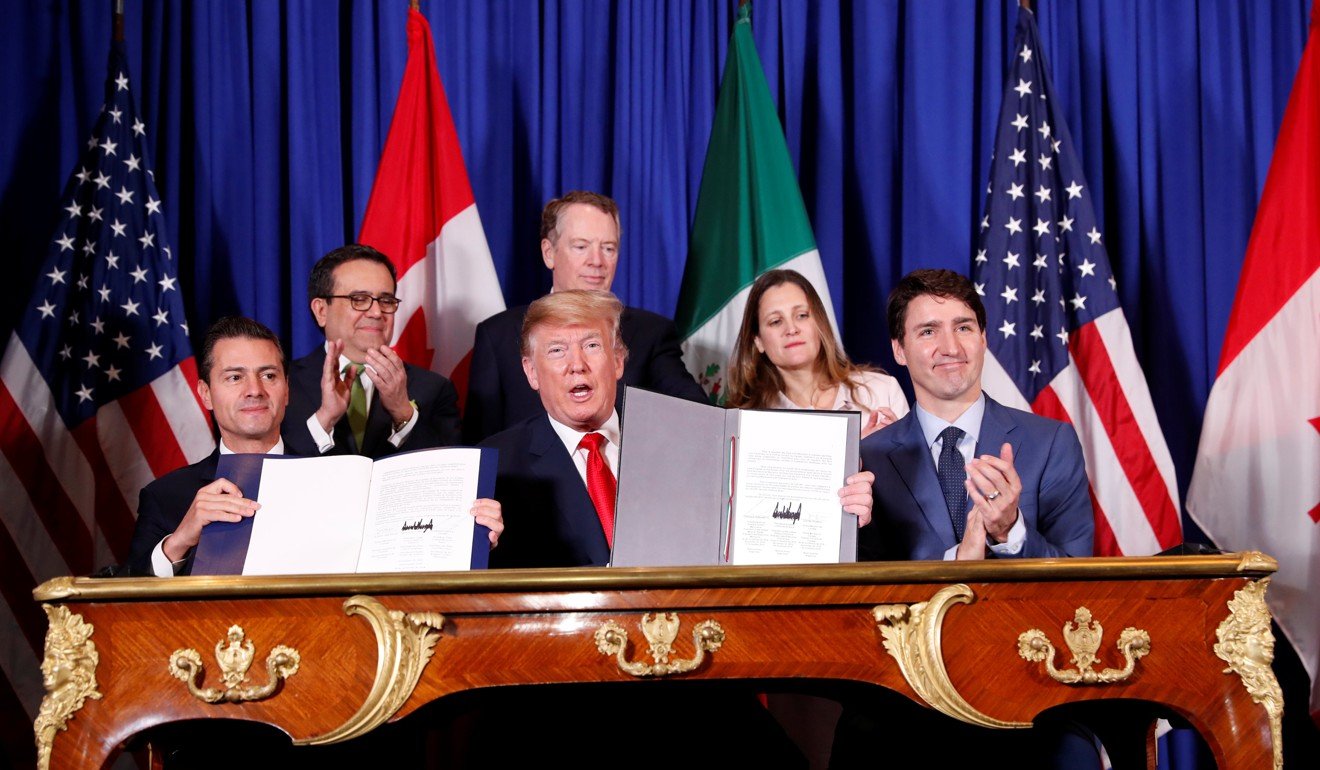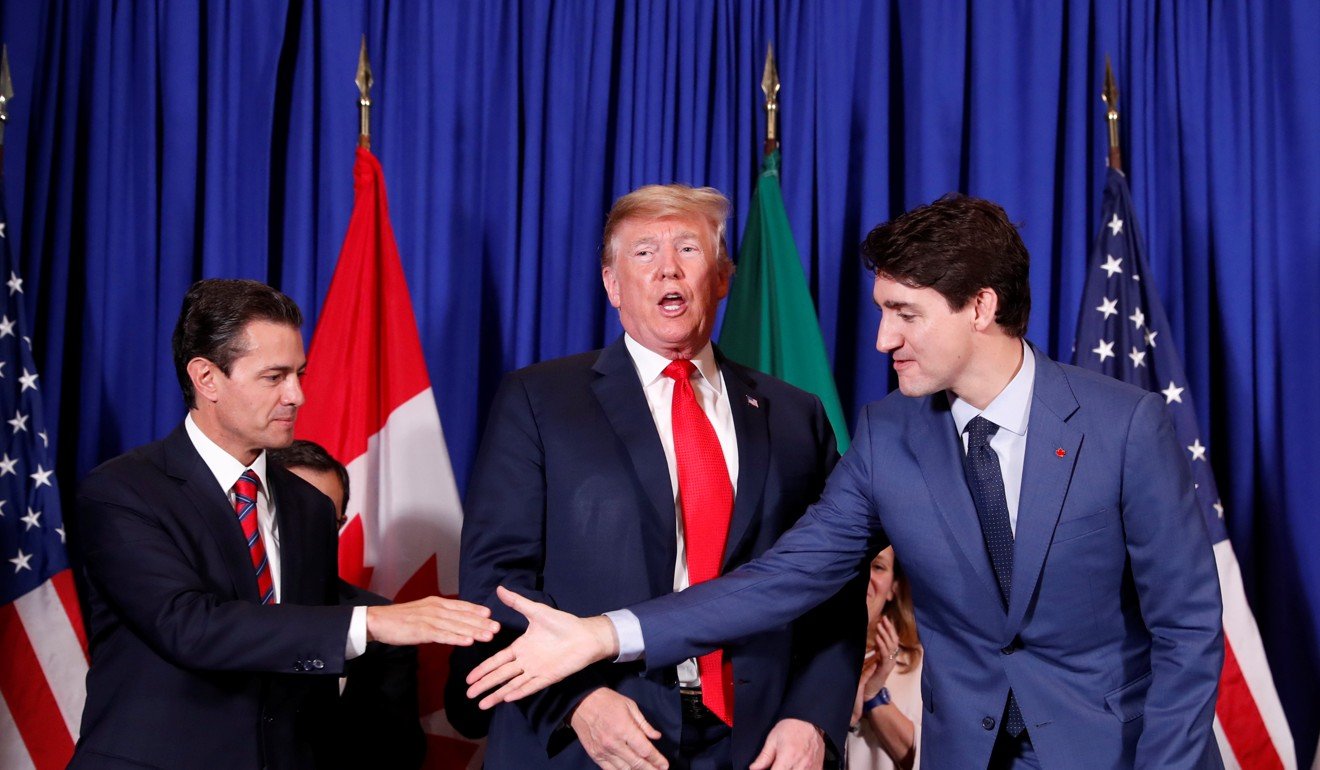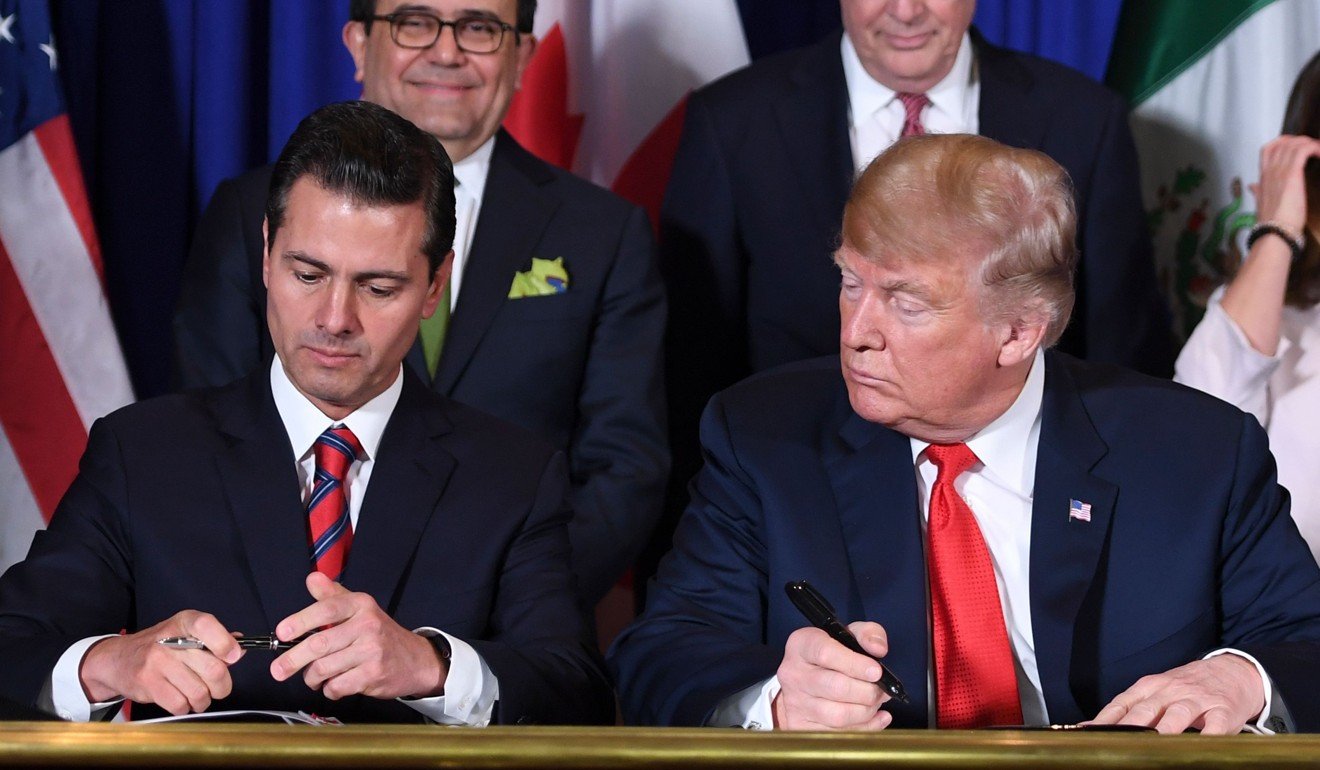
Donald Trump signs Nafta replacement, but hurdles remain in Congress
- The signing, which took place on the sidelines of the G20 summit, shifts the onus onto each country’s legislatures
- The new deal is known as the US-Mexico-Canada Agreement, though the Canadians have avoided calling it that

The US, Canada and Mexico signed a new trade deal championed by US President Donald Trump to replace the quarter-century-old Nafta pact, capping a year of intense negotiations and offering a glimmer of certainty amid rising global tensions over trade.
Trump, Canadian Prime Minister Justin Trudeau and outgoing Mexican President Enrique Pena Nieto signed an authorisation for the deal on Friday morning in Buenos Aires on the sidelines of the Group of 20 summit, with their ministers signing it shortly after.
The vast majority of the pact still must be ratified by lawmakers in the three countries, but the signing enacts a handful of immediate protections, such as from auto tariffs.

The deal now heads to ratification, almost certainly by the next US Congress, where Democrats will have a majority in the House starting in January. Uncertainties remain, as the original 1994 pact remains in effect, and tariffs on steel and aluminium continue to be a major irritant.
Still, the signing concluded an arduous process that was marked by repeated threats from Trump to exit the continent’s free-trade zone.
“This has been a battle,” Trump said in remarks before the leaders put pen to paper. “This is a model agreement that changes the trade landscape forever.”
The new deal is known as the US-Mexico-Canada Agreement, though the Canadians have avoided calling it that. The US and Mexico struck a deal in August, followed by Canada on September 30.
The three countries sealed the new accord a day before Trump is to meet with Chinese President Xi Jinping to discuss a possible truce in the US-China trade war.
The US leader has touched off a global showdown over trade by threatening a broad range of tariffs to force changes in trade practices that he considers unfair to American industry. No one has been spared in that trade fight – not even Canada and Mexico, the top two buyers of US goods.
The signing was done on Pena Nieto’s last day in office, a target the countries had pushed for in a bid to have it sealed before his successor, Andres Manuel Lopez Obrador, takes power on Saturday.
Trump acknowledged the often difficult path during negotiations and praised the outcome. “We’ve taken a lot of barbs, and a little abuse, and we got there and it’s great for all of our countries,” he said.

Trudeau said the deal removes uncertainty hanging over the region: “The new North American Free Trade Agreement maintains stability for Canada’s entire economy.”
Already there are calls for changes from the US Congress, while Lopez Obrador’s Morena party, which holds a majority in Mexico’s Senate, may also seek revisions. Trudeau has a majority in Canada’s House of Commons but faces an election next October.
Trump expressed optimism about getting the deal blessed by US lawmakers. “I look forward to working with members of Congress,” he said. “It’s been so well reviewed I don’t expect to have much of a problem.”
The original three-nation North American Free Trade Agreement took effect in 1994, but Trump had vilified it as a terrible deal that had fuelled a loss of US manufacturing jobs. The three nations trade more than $1 trillion in goods annually.
Pena Nieto said the new deal would provide a more “modern framework” for future exchanges between the countries.
With the signing, “the whole region becomes a good basis to invest in the car industry,” Jesus Seade, the Nafta negotiator for Lopez Obrador, said in an interview with Bloomberg Television on Thursday night. “The car industry is the most important part of the agreement, it’s where most of the trade takes place. There will have to be more investment by Toyota, Honda, Mercedes, and the Germans and Koreans.”
Steel and aluminium tariffs, once seen as a pressure tactic in trade talks, remain in place. The US continues to push for a quota in exchange for lifting the tariffs on Canada and Mexico, which have applied their own retaliatory levies.
Canada has said it will lift its tariffs once the US lifts its own. The unresolved tariff fight will sap private-sector support for the USMCA deal, said Rufus Yerxa, president of the National Foreign Trade Council in the US.

Trudeau pressed for a resolution to the tariff spat. “Donald, it’s all the more reason why we need to keep working to remove the tariffs on steel and aluminium between our countries,” the Canadian leader said at the ceremony. Trump gave no indication of his plans on the subject.
The parts of the deal that kick in immediately are 13 provisions known as side letters. The foremost allow exclusions from any US auto tariffs up to a certain quota that is set well above current Canadian and Mexican auto production.
The side letters also include deals between the US and Mexico on biologic drugs, cheese names and auto safety standards; and deals between the US and Canada on wine, water and energy.